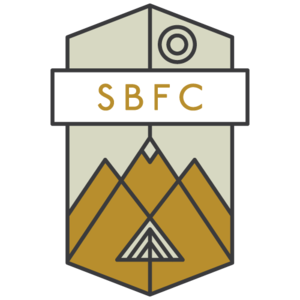Kate Barrett – Wilderness Ranger Intern
University of Montana
Cabin Creek
July 26 – August 2
Salmon-Challis National Forest
This summer has been a cyclical one, three months built on good rhythms. For me, our hitches follow a predictable arc: day 1, when the packs are heavy, the week long, our bodies unbreakable; day 4, when the bear bag finally goes up without a fight; day 5, when every lake and stream starts to look like an appealing place to bathe; day 6, when the saw catches and the patience runs thin; day 7, when we come out and I’m quick to realize all I want is to go back in.
It’s giving me fits to think these rhythms are coming to an end—our next hitch will be short and then we’re finished. But let us not dwell.
Riley and I have spent the last three hitches working for the Middle Fork Ranger District out of Challis, Idaho. Many of the Middle Fork rangers have been on the forest for decades and they’ve been a joy to work with and learn from. They know the trails so intimately, it’s an inspiration. At this point in my life, in this line of work especially, it’s not often you find anyone who stays put for long. Everyone is out there bagging peaks, flying to Nepal or New Zealand, dirtbagging their way across hundreds of miles, collecting new places the way normal people collect furniture. And no one will say it aloud but one-upmanship is most certainly a motivator. Like, dude, you mean you haven’t summited Mount Whitney in a summer-time snowstorm at 4 in the morning? That’s too bad for you because, you know, I have and it was badass.
God knows I’ve participated in my share of chest-puffing. And sometimes I wake up in a cold sweat knowing someone somewhere is cliff-diving into an aquamarine pool in Southeast Asia and that person is not me. Quick, someone buy me a plane ticket; I need to lay eyes on EVERYTHING BEAUTIFUL EVER.
The rangers in Challis do not sit still, but they do stay put. They know which creeks have jumped their beds and where to part the undergrowth for a trickle of spring water. They check on listing trees at bends in the trail, season after season, until the snow or wind or gravity and simple time bring them down. It’s such a relief to see—it turns out this is the pace I’ve always wanted to move. Slowly. Deeply. With great care.
And boy oh boy, do we move slow. The Salmon-Challis National Forest, and the whole of the Frank Church Wilderness, is spotted with burn areas, which means our summer has been heavy on the cross-cut duty. Sawing around 300 to 400 trees every hitch doesn’t leave much time for other projects. We’ve been averaging somewhere between a mile and a mile-and-a-half of clearing for every ten-hour workday. This last hitch, which we spent on the Cabin Creek and Crimson Lake Trails, was no exception. We clocked out at 327 trees and logged plenty of miles walking to and from camp every day. We stayed in the valley for the first three nights (followed by frosty mornings), but packed up and made the hefty climb to Crimson Lake on Sunday. All our lung-busting paid off, though, because the lake was clear and cold and rimmed with rocky peaks. It’s easily one of the most striking places we’ve had the privilege to work in this summer.
Clearing the trail up was a taxing job, but after work we got to play—skinny-dipping in the lake, some fly-fishing, sunset gazing, hot-drink sipping. I was sorry to leave. I’m in Missoula now, smelling good, ready for the cycle to start over, waiting to get back in the rhythm.



